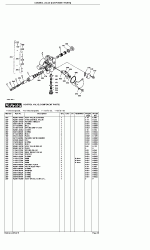MarkV
Super Member
- Joined
- Apr 7, 2000
- Messages
- 5,636
- Location
- Cedartown, Ga and N. Ga mountains
- Tractor
- 1998 Kubota B21, 2005 Kubota L39
I find it interesting that the pressure was that far off in the first place. I guess that in any manufacturing setting there is error so you have to wonder if your 3pt or loader is operating 10 or 20% below its rated limits. Might not be a big deal on large machines but on my little tractor a drop in loader capacity could be a real deal breaker on some projects.
Hayden, I understand where you hooked up the pressure gage and the logic of checking all the systems from that point. A couple of questions though. You said you set the loader relief valve to 2200, how does one do that? And, what type of gauge does one look to buy for this type of application.
I sure do like having you smart guys around to guide those like myself through these things.
MarkV
Hayden, I understand where you hooked up the pressure gage and the logic of checking all the systems from that point. A couple of questions though. You said you set the loader relief valve to 2200, how does one do that? And, what type of gauge does one look to buy for this type of application.
I sure do like having you smart guys around to guide those like myself through these things.
MarkV


